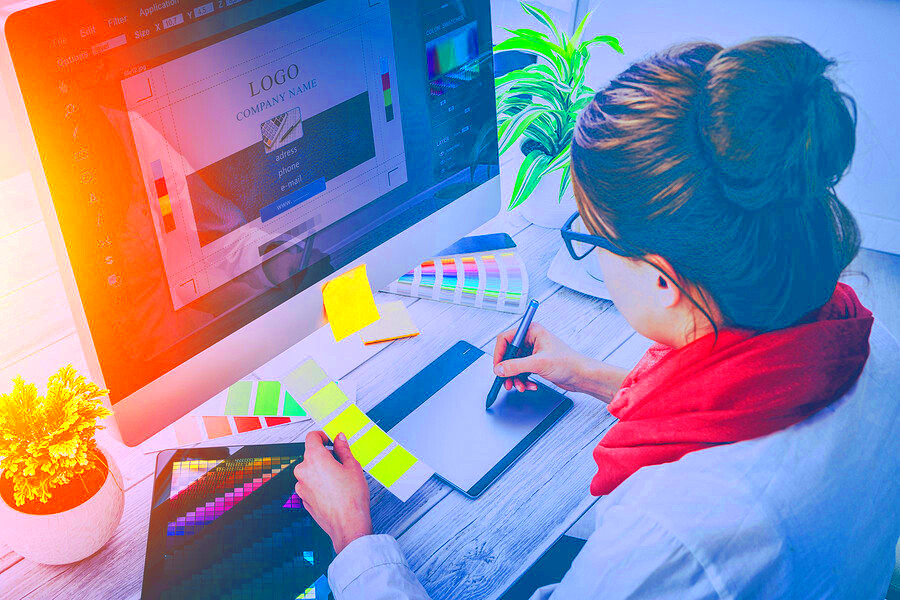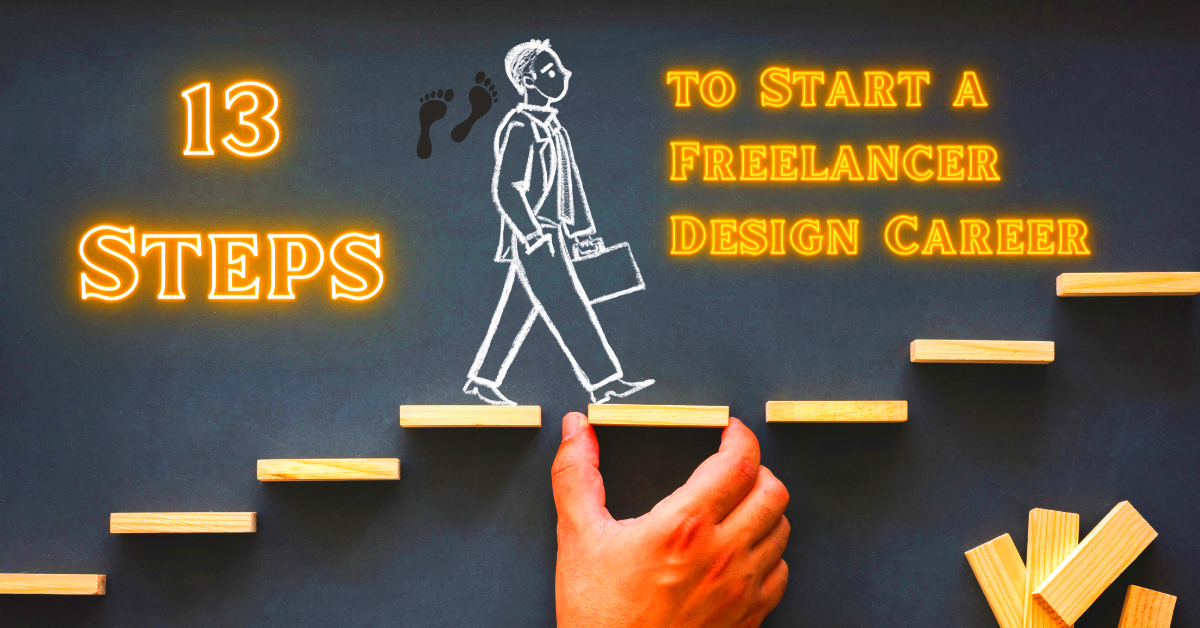Freelance design offers a flexible and rewarding career path for creative individuals. As a freelance designer, you have the freedom to choose your projects, work with different clients, and set your own schedule. This career allows you to express your creativity while earning a living. Whether you're interested in graphic design, web design, or another niche, there are plenty of opportunities available. In this guide, we will explore the essential skills you need, how to create a stunning portfolio, and tips for finding clients.
Understanding the Skills Needed for Freelance Design

To succeed as a freelance designer, you should have a strong foundation in several key skills. Here are the essential skills you will need:
- Design Principles: Understanding color theory, typography, and layout is crucial for creating effective designs.
- Software Proficiency: Familiarity with design software like Adobe Creative Suite, Sketch, or Figma is a must.
- Communication Skills: You need to effectively communicate with clients to understand their needs and convey your ideas.
- Time Management: Freelancers must manage their time efficiently to meet deadlines and juggle multiple projects.
- Problem-Solving: Design often involves finding creative solutions to challenges that arise during the project.
Having a mix of these skills will help you stand out in the competitive freelance market and attract clients.
Also Read This: How to Get Discovered on Fiverr
Creating a Portfolio to Showcase Your Work

A strong portfolio is essential for any freelance designer. It acts as your resume, showcasing your skills and style to potential clients. Here are some tips to create an impressive portfolio:
- Select Your Best Work: Choose projects that highlight your range and creativity. Quality is more important than quantity.
- Organize by Category: Group similar projects together, whether they are branding, web design, or print. This helps clients find relevant examples quickly.
- Add Case Studies: Include a few detailed case studies explaining your design process, challenges faced, and how you achieved the final result.
- Keep It Updated: Regularly refresh your portfolio with new work to keep it current and reflect your evolving skills.
- Make It Accessible: Create a user-friendly website to host your portfolio. Ensure it loads quickly and is easy to navigate.
By investing time in creating a strong portfolio, you can effectively showcase your talent and attract potential clients.
Also Read This: 5 Surprising Ways to Make Money Online From Your Hobbies
Finding Clients and Job Opportunities

Finding clients as a freelance designer can seem daunting, but with the right strategies, you can connect with the right people. Here are some effective ways to find clients and job opportunities:
- Networking: Attend industry events, workshops, and local meetups. Building relationships can lead to referrals and job opportunities.
- Online Freelance Platforms: Websites like Fiverr, Upwork, and 99designs are great places to find clients. Create a compelling profile and showcase your portfolio.
- Social Media: Use platforms like Instagram, LinkedIn, and Behance to showcase your work and connect with potential clients. Share your projects and engage with your audience.
- Cold Outreach: Don’t hesitate to reach out to businesses that you admire. Craft a personalized email highlighting how you can help them improve their design.
- Referrals: Ask your satisfied clients for referrals. Word of mouth can be a powerful way to attract new business.
By using these methods, you can build a steady stream of clients and ensure a successful freelance career.
Also Read This: How to Change Fiverr Currency
Setting Your Rates as a Freelance Designer
Determining how much to charge as a freelance designer is crucial for your business. You want to ensure you’re compensated fairly while remaining competitive. Here are some tips to help you set your rates:
- Research the Market: Look at what other freelance designers with similar experience and skills charge. This will give you a baseline.
- Consider Your Experience: If you’re just starting, you might need to charge less to attract clients. As you gain experience, gradually increase your rates.
- Choose a Pricing Model: Decide whether you want to charge hourly, per project, or retainers. Each model has its pros and cons.
- Factor in Expenses: Consider your overhead costs, such as software, hardware, and any other business expenses when setting your rates.
- Be Transparent: Clearly communicate your rates and any additional costs to your clients. Transparency builds trust.
By carefully considering these factors, you can set rates that reflect your value while being attractive to clients.
Also Read This: Earnings of Freelance Artists
Managing Your Time and Projects Effectively
Time management is a key skill for freelance designers. Juggling multiple projects can be challenging, but with some organization and planning, you can stay on top of your work. Here are some strategies:
- Use Project Management Tools: Tools like Trello, Asana, or Monday.com can help you track tasks and deadlines. These platforms keep everything organized in one place.
- Set Clear Deadlines: Break projects into smaller tasks with specific deadlines. This helps prevent overwhelm and keeps you focused.
- Create a Daily Schedule: Allocate specific time blocks for design work, client meetings, and breaks. Sticking to a schedule can enhance productivity.
- Limit Distractions: Find a quiet workspace and minimize distractions. Use apps that block distracting websites during work hours.
- Review Your Progress: Regularly assess how you’re doing with your projects. Adjust your schedule and tasks as necessary to stay on track.
By implementing these time management techniques, you can work efficiently and maintain a healthy work-life balance as a freelance designer.
Also Read This: How Long Does Fiverr Take to Review W9? Insights from Reddit
Building Your Brand as a Freelance Designer
Building a strong brand is essential for any freelance designer. Your brand represents your identity, style, and values, helping you stand out in a crowded market. Here are some effective strategies to build your brand:
- Define Your Niche: Identify what type of design work you are passionate about, whether it’s graphic design, web design, or something else. Specializing can help you attract the right clients.
- Create a Unique Visual Identity: Develop a logo, color scheme, and typography that reflect your style. Consistency in your visuals will make your brand memorable.
- Build an Online Presence: Use social media and a professional website to showcase your work and share insights about your design process. Platforms like Instagram and LinkedIn can help you reach a broader audience.
- Engage with Your Audience: Regularly interact with your followers. Respond to comments, ask for feedback, and share behind-the-scenes content to create a community around your brand.
- Offer Value: Create helpful content such as blog posts, tutorials, or webinars that showcase your expertise. This not only builds trust but also positions you as an authority in your field.
By focusing on these areas, you can effectively build a brand that resonates with clients and sets you apart from the competition.
Also Read This: Screenshot Strategy: Bypassing PicsArt Screenshot Restrictions
Common Challenges in Freelance Design and How to Overcome Them
Freelance design comes with its own set of challenges. Understanding these obstacles and knowing how to tackle them can make your journey smoother. Here are some common challenges and tips for overcoming them:
- Client Communication: Misunderstandings can happen. To avoid this, clarify project details upfront and maintain regular communication throughout.
- Inconsistent Income: Freelancers often experience income fluctuations. To manage this, create a budget and set aside savings during high-earning months to cover leaner times.
- Time Management: Balancing multiple projects can be tough. Use project management tools and set realistic deadlines to keep track of your workload.
- Self-Motivation: It can be challenging to stay motivated when working alone. Establish a routine, set goals, and reward yourself for completing tasks.
- Dealing with Feedback: Not all feedback will be positive. Learn to separate constructive criticism from personal attacks and use it to improve your work.
By acknowledging these challenges and implementing strategies to overcome them, you can navigate the freelance landscape with confidence.
Also Read This: How Do I Find Work on Fiverr?
Frequently Asked Questions
As a freelance designer, you might have several questions. Here are some frequently asked questions along with their answers:
- How do I start as a freelance designer? Begin by honing your skills, creating a portfolio, and networking to find clients.
- What software do I need for freelance design? Popular tools include Adobe Creative Suite, Sketch, and Figma. Choose software that aligns with your design focus.
- How do I handle difficult clients? Stay professional and calm. Listen to their concerns and aim for a solution that satisfies both parties.
- Is it better to charge hourly or per project? It depends on the project. Hourly rates are useful for ongoing work, while project-based fees can provide clearer expectations.
- What if I run out of work? Regularly market yourself through networking, social media, and freelance platforms to maintain a steady stream of clients.
These answers can help you navigate your freelance journey and prepare for potential challenges along the way.
Conclusion
In conclusion, starting your journey as a freelance designer can be both exciting and challenging. By understanding the skills you need, creating an impressive portfolio, finding clients, setting your rates, and managing your time effectively, you set yourself up for success. Remember to build your brand and tackle common challenges with confidence. Freelancing offers the freedom to express your creativity and work on diverse projects, but it requires dedication and proactive efforts to thrive. Embrace the journey, keep learning, and enjoy the fulfilling experience of being a freelance designer.




